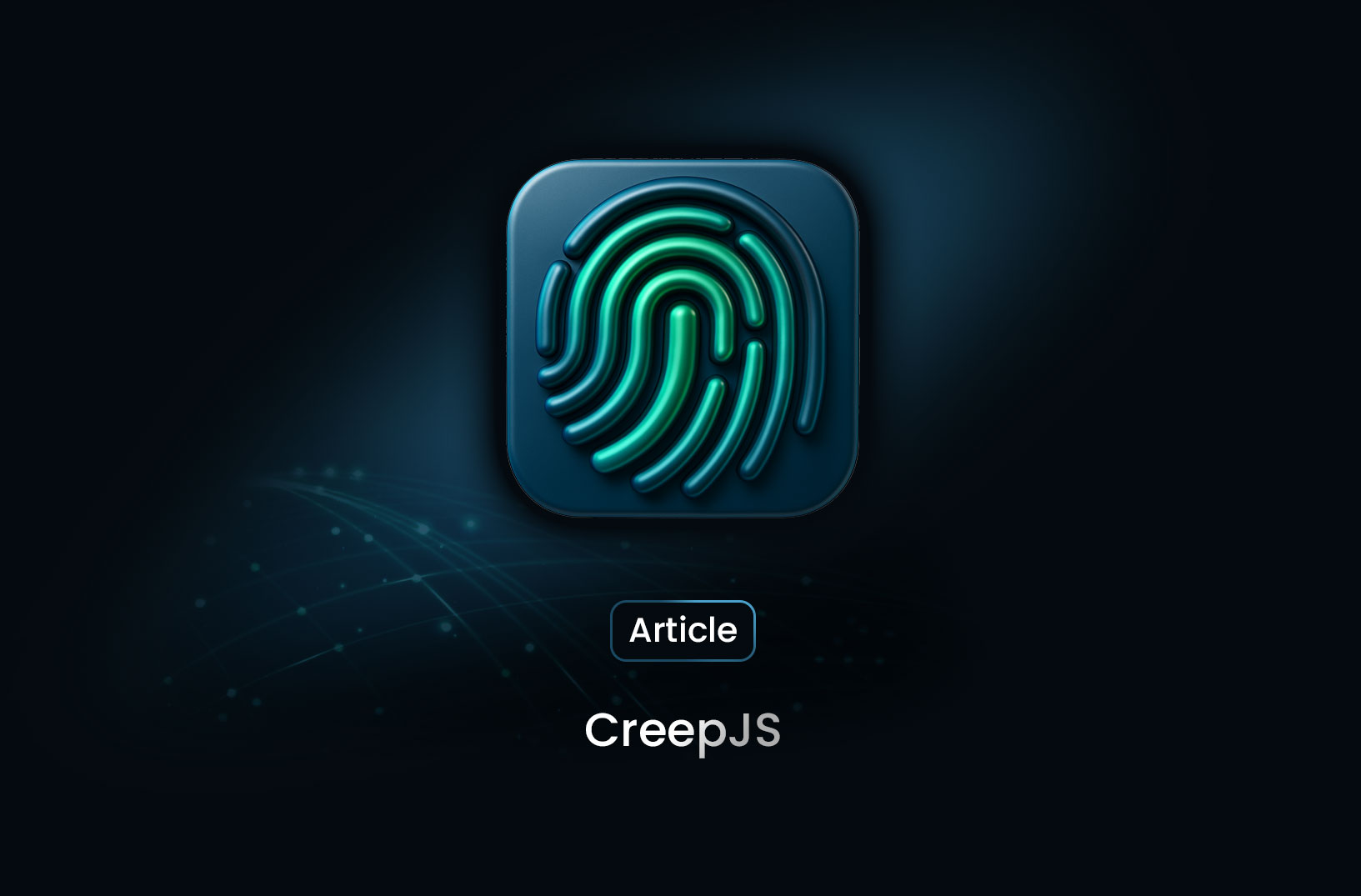
A Deep Dive into CreepJS and Web Fingerprinting Techniques
ArticleCreepJS measures your browser’s unique fingerprint through canvas tests, WebGL behavior, system data, and more. This guide explains how the tool works and what its results mean.
What Is CreepJS?
CreepJS is a browser fingerprinting tool designed to measure how uniquely identifiable a device is based on the information exposed by the browser. It collects detailed technical data—such as hardware characteristics, rendering behavior, and supported APIs—to determine how easily a website can track a user without cookies.
Unlike simple fingerprint tests, CreepJS performs deep, advanced checks that reveal subtle inconsistencies, spoofed values, and entropy levels. It is often used for privacy analysis, research, and testing anti-tracking tools.
What CreepJS Measures
CreepJS performs a wide range of fingerprinting tests, including:
1. Canvas Fingerprinting
Analyzes how the browser renders shapes and text in a <canvas> element.
Even tiny rendering differences create a unique signature.
2. WebGL Fingerprinting
Detects GPU model behavior, driver variations, and graphics features based on rendering output.
3. Audio Fingerprinting
Uses the Web Audio API to determine unique processing characteristics of the device.
4. User Agent & Navigator Data
Collects browser version, platform details, CPU info, and device memory.
5. Screen & Display Characteristics
Includes screen size, color depth, pixel ratio, and available resolutions.
6. Timezone & Locale
Detects system clock offset, language, and regional formatting behavior.
7. Fonts, Emojis & Text Rendering
Measures font availability and glyph rendering differences.
8. Permissions API & Feature Detection
Reveals which browser capabilities are enabled or blocked.
In combination, these data points create a highly detailed device fingerprint.
Why People Use CreepJS
Privacy Testing
Users check how identifiable their browser is and whether anti-tracking tools (VPNs, extensions, hardened browsers) work effectively.
Developer Research
Developers use CreepJS to understand which browser properties can leak unique data and how to minimize exposure.
Security Analysis
Security teams test how easily devices can be profiled or linked across sessions.
Browser Hardening
Privacy-focused users test different setups:
- Firefox hardened profiles
- Safari’s anti-tracking
- Brave’s fingerprinting protection
- Tor Browser configurations
CreepJS helps measure how successful these protections are.
What Makes CreepJS Different from Other Fingerprinting Tests?
✅ More Detailed Measurements
CreepJS performs deeper, more granular tests than typical fingerprinting checkers.
✅ Calculates Entropy & Uniqueness
It doesn’t just collect data — it shows how unique each value is.
✅ Detects Spoofing & Inconsistent Values
If your browser tries to fake its identity, CreepJS often reveals mismatches.
✅ Focuses on Modern APIs
It evaluates newer fingerprint vectors such as:
- OffscreenCanvas
- WebGPU (in supporting browsers)
- Navigator properties changed by privacy tools
✅ Visual Output
Many results are displayed as fingerprint hashes or entropy graphs.
What CreepJS Results Mean
CreepJS typically shows:
- How identifiable you are (low, medium, or high uniqueness)
- Which APIs leak the most information
- Whether your fingerprint is stable across page reloads
- How vulnerable your setup is to cross-site tracking
- Which protections work and which fail
A “high entropy” output means your device is extremely unique and easily trackable.
How to Reduce Fingerprinting Detected by CreepJS
✅ Use a privacy-focused browser
Browsers like Tor and Brave offer built-in fingerprint resistance.
✅ Standardize your browser configuration
The more “normal” your setup is, the less unique you appear.
✅ Block or limit JavaScript
Most fingerprint methods require JavaScript to run.
✅ Avoid rare screen sizes or unusual hardware
Unique hardware often produces unique fingerprints.
✅ Use containerized or disposable browser sessions
Reduces the long-term stability of your fingerprint.
When Not to Use Fingerprinting Tools
Avoid using CreepJS or similar tools in environments where:
- Corporate IT policies restrict browser testing
- You are using sensitive accounts
- JavaScript-heavy fingerprint pages may cause performance issues
Fingerprinting tests should be used in controlled or personal environments only.
Conclusion
CreepJS is a powerful fingerprinting analysis tool that reveals how identifiable a browser truly is. Whether you're a privacy researcher, developer, or security analyst, CreepJS highlights how modern browsers expose technical details that tracking systems can exploit. Understanding its results helps users strengthen privacy protections and reduce their online fingerprint.
Find more insights here

Proxy 101: What Is a Proxy and Why It Matters for Web Scraping
Learn what a proxy is, how it works, the different types of proxies, and why proxies are essential f...

LunaProxy vs PYPROXY — Which Proxy Service Fits Your Needs in 2025?
Compare LunaProxy and PYPROXY in 2025 to find out which proxy service fits your scraping, automation...

7 Most Effective AI Web Scraping Tools for Automated Data Extraction in 2025
A look at 7 AI web scraping tools that stand out in 2025—what they offer, how they work, and why MrS...
